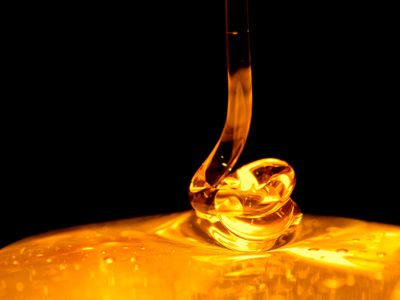
Ask the AI Tutor
Need help with Investigations 03? Ask our AI Tutor!
AI Tutor - Lucy
Connecting with Tutor...
Please wait while we establish connection

The thicker the substance, the less viscous (runny) it is.
Investigations 03
KS2 Science investigations encourage pupils to ask questions, make predictions, and test ideas. Discover how careful observations can lead to amazing scientific discoveries.
1 .
You have built a catapult as part of an investigation of forces. Changing the mass (weight) of the object you place in the catapult could test which of the following?
If weight affects the distance the object is propelled
If weight affects the force of gravity
If weight affects the force contained in the catapult
All of the above
You could see if different weights are thrown further, shorter or equal distances
2 .
Using a catapult to investigate whether weight affects the distance the object is propelled, what would you need to measure in order to collect results?
The mass of the materials used to make the catapult
The aerodynamic properties of the objects
The distance each object travels
The force contained in the catapult
The most practical measurement would be distance travelled. It would be very difficult to measure how long it took the object to land
3 .
If you were investigating how well water dissolves different materials, how should you design the investigation?
By testing three different materials and changing the temperature of the water
By testing three different materials and seeing how much of each material would dissolve
By seeing if different materials would raise the temperature of the water
By seeing if different materials would change the colour of the water
We are investigating how well water dissolves different materials so we are only interested in how much of each material is dissolved
4 .
If you were investigating how well water dissolves different materials, you would need to add solute (the material being dissolved) until the water reached what point?
Saturation point
Boiling point
Freezing point
Dissolving point
A solution is saturated when it can no longer dissolve any new matter
5 .
If you were investigating how well water dissolves different materials, what would you measure?
The temperature of the water
The time it takes the solute to dissolve
The number of times the solution has to be stirred
The amount of each solute which can be dissolved
We are looking at how well a material is dissolved in water, so the best way to find out is to see how much of it can be dissolved
6 .
What unit would you use to measure the amount of a solute which can be dissolved in water?
Centimetres
Degrees Celsius
Grams
Decibels
Grams measure weight or mass so they are the best unit to use
7 .
If you were investigating the viscosity ('runny-ness') of different substances, which of the following could you do?
Test three different substances by allowing them to 'run' down a surface
Test three different substances by allowing them to 'run' down three different surfaces
Test three different substances by letting them 'run' down cold, warm and hot surfaces
Mix the three different substances together and make observations
Remember that if you change two variables (substance and surface temperature), you will no longer have a fair test
8 .
If you were investigating the viscosity ('runny-ness') of different substances by allowing them to 'run' down a surface, what variable would you measure?
The density of the substances
The temperature of the surface
The time taken to 'run' down the surface
How far the substances must 'run' down the surface
Viscous (runny) substances will flow down the surface faster than less viscous ones
9 .
Which unit would you use to measure the time substances take to 'run' down a surface?
Millilitres
Seconds
Degrees Celsius
Grams
Time is measured in seconds, minutes or hours
10 .
Which one of the following could be a conclusion for an investigation into the viscosity (runny-ness) of substances?
Viscous substances are really slow
The thicker the substance, the less viscous (runny) it is
Thin substances are not viscous
The ketchup took the longest to run down the plastic chopping board
Conclusions will usually include words like 'more' or 'less', or words ending in '-er': i.e. 'The colder the temperature, the more slowly seeds germinate'
**Unlimited Quizzes Await You! 🚀**
Hey there, quiz champ! 🌟 You've already tackled today's free questions.
Ready for more?
Ready for more?
🔓 Unlock UNLIMITED Quizzes and challenge yourself every day. But that's
not all...
not all...
🔥 As a Subscriber you can join our thrilling "Daily Streak" against other
quizzers. Try to win a coveted spot on our Hall of Fame Page.
quizzers. Try to win a coveted spot on our Hall of Fame Page.
Don't miss out! Join us now and keep the fun rolling. 🎉
**Unlimited Quizzes Await You! 🚀**
Hey there, quiz champ! 🌟 You've already tackled today's free questions. Ready for more?
🔓 Unlock UNLIMITED Quizzes and challenge yourself every day. But that's not all...
🔥 As a Subscriber you can join our thrilling "Daily Streak" against other quizzers. Try to win a coveted spot on our Hall of Fame Page.
Don't miss out! Join us now and keep the fun rolling. 🎉






